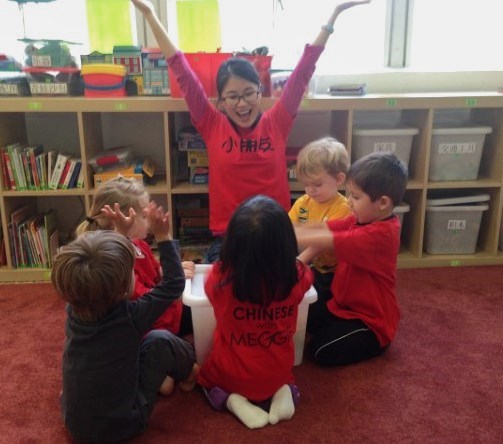Start them now
/I couldn’t be happier to welcome Virginia Woodruff to our roster of guest bloggers. Today she shares her family’s experiences with one of Austin’s best language immersion programs. Virginia founded the website Great Moments in Parenting, where moms and dads share the agony and ecstasy of life with kids. She invites you to share yours, too.
When I admit that my kids take Chinese, I immediately follow it with “But I swear I’m not a tiger mama!” I’m actually a rather laissez-faire mother, but my mother-in-law’s trip to China prompted me to start my kids in one of the world’s oldest, most spoken, and most challenging languages. (Note that I said “challenging,” rather than “difficult”—part of my attempt to reframe words around my kids, who have no idea that for an average American adult, learning Chinese is equivalent to having your hair plucked out strand by strand.)
My mother-in-law, a language maven, studied Chinese before her trip, just to have a “get along” ability. At the time my son was two. When my mother-in-law returned, she said, “If you can, start him in Chinese NOW!” Apparently it was difficult to “get along.”
We had always hoped our children would be bilingual, so why not start them in this complex language? I set myself to researching and found Chinese with Meggie, an immersion program in central Austin. It was so quaint: Taiwan native Meggie Chou held classes in a toy-filled studio behind her home. Classes were limited to four kids and were all in Chinese. The children played as she slid in the learning by reading picture books in an animated tone, doing puzzles, and playing eating and drinking games with plastic toys. As my son got older it included a quick game of flashcards, identifying pictures of animals or family members.
The program became so popular that, just a few years later, Meggie moved it to the former Griffin School building in Hyde Park, took over five classrooms, and hired six Chinese teachers. Meggie trains all her instructors in her own child-friendly style. “Working with young children, you need a very special connection with them so they trust you and want to communicate with you,” Meggie explains.
Meggie says immersion learning works best for children under age six: “For kids at this age, their brains are working on building language skills in general. There is no concept of ‘first language’ or ‘second language.’” Young children don’t filter the information they receive. “Whatever information they get, they just try to sort out and save it as part of their cognition,” Meggie says.
Older kids usually begin with Chinese-as-a-second-language classes taught in English. “They start to filter information that cannot be recognized by their cognition,” says Meggie. “The total-immersion class might be difficult or ‘distanced’ for older kids.”
We’ve been going to Chinese with Meggie for four years now (my twin girls joined when they were about 18 months old). We’re committed, but it’s not always easy. It’s a long drive in traffic from their school, and I can’t say my kids skip into the classroom every week. But when they grumble, I remind them, “It’s pretty cool that you’re learning Chinese. Maybe one day you can go to China!”
My girls, who started so young, just think it’s par for the course to speak Chinese. As Meggie explains, “When they start to speak, they copy whatever sound they hear. Mommy says, ‘apple’; Miss Meggie says, ‘pingqua.’”
We count ourselves lucky that we found this intimate atmosphere for learning a language. When I started looking, I swore, “I’m not doing this if it’s taught in some authoritarian style.” I pictured rows of students reciting memorized phrases. We were Montessorians, after all (“help me to help myself”), and I knew a traditional structure wouldn’t fly with my individualistic kids.
I appreciated the difference between Chinese with Meggie and traditional Chinese ways of teaching when we hosted a high school exchange student from China. I had hoped she would speak Chinese with our kids, but it was a nonstarter. The idea of slowing down and repeating words to children, engaging their natural curiosity, didn't make any sense to her. If they couldn't understand her immediately, she walked away. She was used to learning through tests and quizzing. The only part she did grasp was flashcard review.
Some parents bring their kids to Chinese class because they want them to be global citizens; some are bilingual themselves and see Chinese as the third logical language to add; some are—yes—tiger mamas; and some, like me, stumble upon it. But if you want your kids exposed to Chinese (or any other language) while their brains are still spongelike, take my mother-in-law’s advice: Start them now.
Virginia Woodruff










